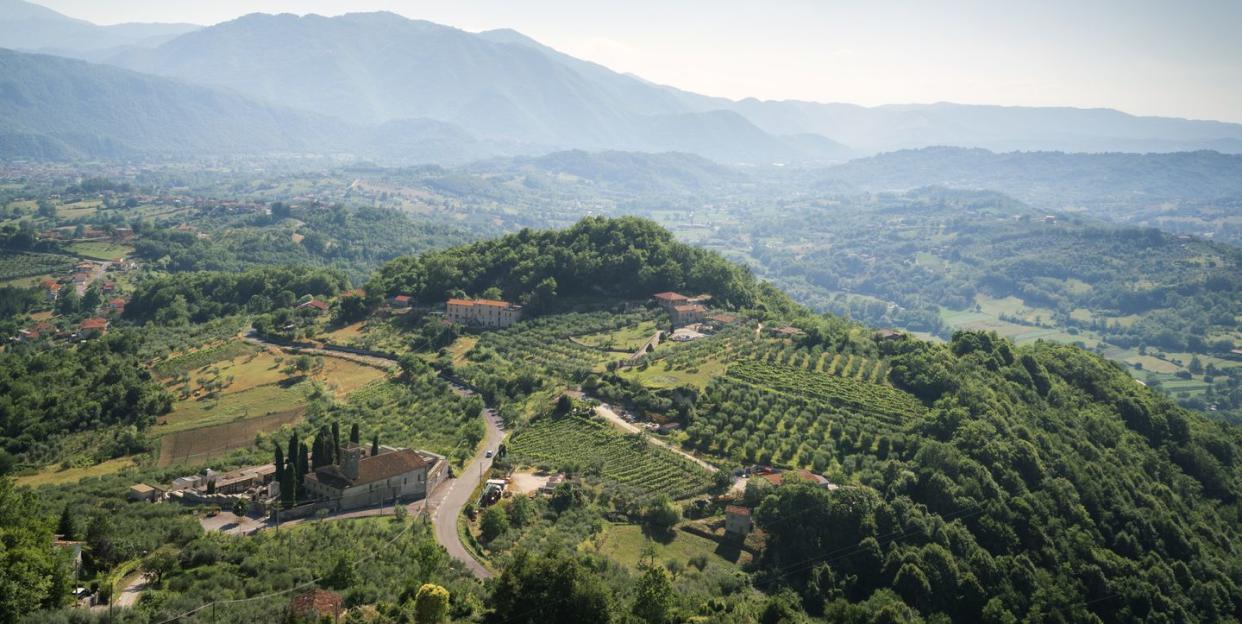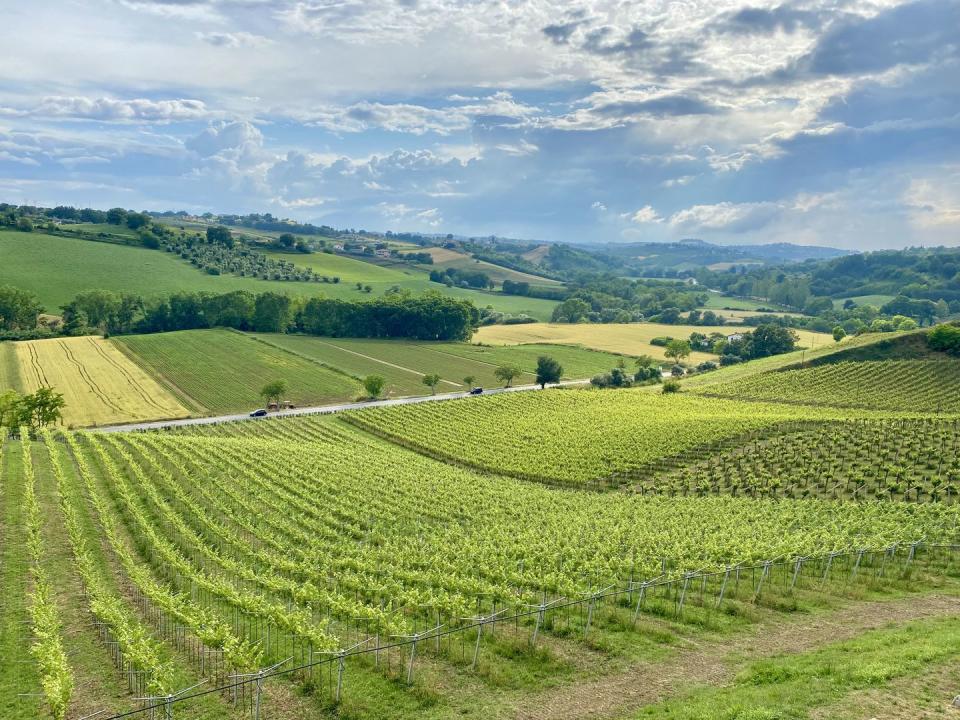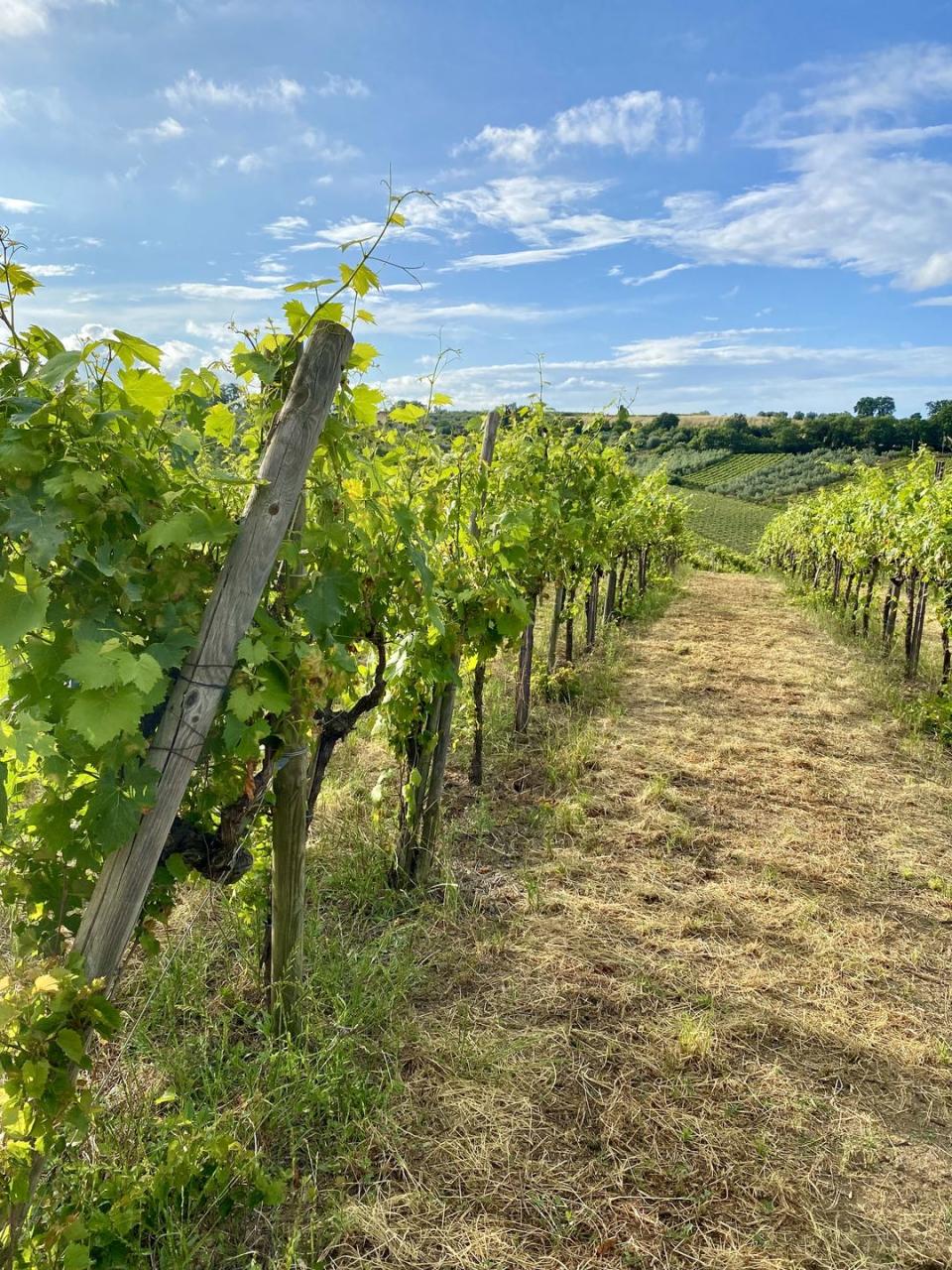This Picturesque Wine Region in Italy Is Still Flying Under the Radar—but Won't Be for Long

Tuscany, Piedmont, Sardinia, Veneto and Sicily (especially since The White Lotus filmed there!) might get more glory, but there’s an under-the-radar wine region every oenophile
should add to their travel bucket lists: Abruzzo.
Fly into Rome and drive just 2 hours east, and you’ll land in Abruzzo. After visiting this summer, we can confirm it’s high time for Abruzzo to get its moment in the sun. (Speaking of which, here, it shines more than 69 percent of the time between June and September.)
Why Abruzzo Is One of the Best Wine Destinations
Abruzzo often gets overlooked by those aforementioned buzzy wine regions—so much so that locals are often surprised when tourists visit. Yes, it’s that under the radar. It probably won’t be for long, though, which is why we recommend booking a trip ASAP.
When you visit Abruzzo, you’ll be treated to picturesque landscapes courtesy of the 123,000-acre National Park of Abruzzo, Lazio, and Molise. This is one of many natural paradises that helped to earn this area its nickname as the “green lung of Italy,” which it comes by honestly due to being home to more parks and protected land areas than any other region.
The Climate of Abruzzo

This scenic, 89,000-acre area is bookended by the crystal-blue Adriatic Sea and the gorgeously green Apennines Mountains. Those picturesque features mean that Abruzzo isn’t just stunning to look at, but it’s also set up for grape success thanks to a variety of microclimates and soil conditions.
No wonder wine has been made in Abruzzo since around 600 B.C. The land ranges from rich clay to rocky to limestone-laced, creating areas that are perfect for both red and white wine grape-growing, and the temperature variations and strong ventilation allows for a diverse cast of crop characters to blossom, including olives and a wide range of grapes.
The Grapes of Abruzzo

In Abruzzo, montepulciano reigns supreme; the red grape thrives in the low hills and clay-rich soil near the mountains. The 250+ wineries in the four Abruzzo provinces (L'Aquila, Teramo, Pescara, and Chieti) frequently feature montepulciano in its ruby-hued, velvety glory. Occasionally, they transform it into a rosé called cerasuolo d'Abruzzo as well. cabernet franc, cabernet sauvignon, merlot and pinot noir are also grown in smaller quantities.
As far as white grapes go, trebbiano, pecorino, and passerina flourish along the coast, where the salty wind blows in, lending a pleasant saline quality.
The Food of Abruzzo
When you visit, don’t miss a local specialty called arrosticini (grilled lamb skewers), and be sure to seek out a big bowl of chitarra pasta, a noodle style that’s believed to have been born in Abruzzo. Bread made with local wheat, cured meats, cheeses and olive oil can team up to make an epic charcuterie board that will make wine from any of the following brands even better.
The Best Wineries in Abruzzo
Slow travel, sustainable food and wine, welcoming hospitality and crystal blue waters along the scenic Trabocchi Coast make this one of the best wine destinations to consider for future trips. (P.S. When you do, we highly recommend you splurge on these 8 travel upgrades that are always worth it, according to travel pros.) The wineries ahead offer unique and unforgettable experiences.
Not quite ready to book a ticket? Many of these wineries have distributors in the U.S., so check with local retailers and search online to see if they ship to your state.
Best For Nature-Lovers: Pasetti
If you enjoy hiking, mountain biking or simply unplugging and feeling like you’re in your own little world, book a room at Tenuta Testarossa. This agriturismo (translation: lodging situated on an agricultural property, such as a farm, ranch or winery), is home base for Pasetti Winery—and can be your home away from home, too. At 1,800 feet of elevation, their historic home allows gusts to “relax in contact with nature. You’ll find corners of paradise where you can enjoy the peace of the pool, read a good book and a walk in the woods…In a few minutes, the Adriatic coast will allow you to spend a day on the beach.”
Fifth-generation Pasetti is currently the only company in Italy allowed to display the National Park logo in the back of its bottles; this is because all of its land is actually located within Gran Sasso and Monti della Laga National Park.
Dad Domenico named their signature montepulciano wine Testarossa (“red head”), after his daughter Francesca’s red hair. You’ll also likely meet Laura, the matriarch (who whips up a mean homemade pasta), as well as sons, marketing ace Massimo and lead oenologist Davide.
Most Welcoming: Fontefico
“When you’re here, you’re family,” might be a motto originally dreamed up for another venue with Italian inspiration, but it wholeheartedly applies here. Overlooking the Gulf of Vasto in southern Abruzzo, you’ll find Fontefico, a popular wedding destination for locals and visitors alike, and home to 37 acres of organic vineyards.
Brothers Nicola and Emanuele Altieri lead the charge for the winemaking efforts, and one even illustrates a character for each label to “tell an anecdote of the vintage,” the Fontefico team says.
They welcome visitors from around the globe to visit and enroll in The Fontefico Experience (a 3-hour lunch and wine class), or take part in a cooking class (which might just be with their on-site chef, Mama Altieri). You can also sample your way through a wine-only class or vertical tasting (sampling several years of the same grape). Or if you’re feeling adventurous roll up your sleeves to join the team for a morning of harvesting grapes followed by a wine-paired lunch.
For a Peek at the Future of Sustainability: Valori
Valori owner, who just so happens to be a retired soccer superstar, Luigi Valori, lives by a philosophy that exhibits his dedication to the craft. “Chiamami quando piove,” or “call me with the rain.” By that, Valori is essentially telling others, “please don’t bother me when I could be working in the vineyard fostering a stronger relationship with nature and vines; my schedule is available only on rainy days.”
Valori loves researching and innovation in organic and sustainable wine practices, which allow each of his releases to offer a true taste of place. You’ll find this place in the Teramo hills on the northern end of Abruzzo, near both sea and forest.
“We believe in a high-quality agriculture that, on top of being organic, is sustainable for the environment, for the community and for the market,” Valori says. “We fund our daily work on scientific research to achieve better efficiency, yields and environmental protection, to contribute through excellent products to the spread of a sustainable lifestyle.”
This is a terrific Abruzzo winery if you want to taste your way through the variety that the region has to offer. Valori currently offers Montepulciano d’Abruzzo DOC, Cerasuolo d’Abruzzo DOC, Abruzzo Pecorino DOC, Merlot Colli Aprutini IGT Inkiostro and Montepulciano d’Abruzzo DOC BIO Riserva. (We sipped and became big fans of the Cerasuolo rosé, which is strawberry-forward, a bit creamy and offers a hint of herbaceousness—the perfect pairing for pizza!)
Best For a Taste of History: Emidio Pepe and Stefania Pepe
Emidio Pepe is a legend in Abruzzo. Since he took over this Gran Sasso Mountain-adjacent estate in the town of Torano Nuovo 1964, he’s created some of the region’s most noteworthy wines using completely manual and natural practices. He’s never used chemicals and swears by biodynamic practices and cover crops to allow his 50+-year-old vines to produce wine that he gladly shares with the world—as well as the 350,000(!) bottles that are aging in his library.
In tandem with minerality the wines score from the clay and limestone soil, as well as the old school foot-stomping (in sanitary boots!) grape-pressing technique, the biodynamic strategies help make their wines particularly age-worthy, the Pepe team says.
“The resulting biodiversity allows us to have a number of yeast families which will contribute to our spontaneous fermentations, bringing several flavor profiles which are unique.”
Today, two of Emidio’s daughters, Sofia and Daniela, have taken over much of the work to tend to Emidio’s acres, but he’s still a large presence. You might just have the chance to meet the legend himself if you swing by for a tasting or a meal at the on-site farm-to-table restaurant. If you like, you can extend your stay and book a room on the property for the full agriturismo experience.
If you get a chance to try wines from another one of Emidio’s daughters, Stefania Pepe, don’t pass up the chance. Her vinos are also cellar-worthy and impressive. If you fall in love during your visit to Stefania’s plot, you can adopt a plot, row or vine.
You Might Also Like

